
Spain Travel Guide
Plan your Spanish adventure with our expert travel guide. Discover top destinations, culture,
Home • Destination • Spain • Spain Travel Guide

“The most beautiful in the world is, of course, the world itself.” - Wallace Stevens

Spain, a traveler’s dream, boasts a rich history, lively culture, and endless charm. Dive into the heart of this amazing country where history echoes through stunning architecture like the Alhambra and the Sagrada Família.
Taste your way through the nation’s vibrant flavors as you explore Spain’s diverse landscapes. Be sure to hit the sun-soaked beaches, venture into the rugged beauty of the Pyrenees, and hike the Camino de Santiago. While Madrid, Barcelona, and Seville beckon with bustling urban life, the serene Balearic and Canary Islands offer tropical escapes. So, pack your bags, immerse yourself in Spain’s captivating culture, and savor the adventure of a lifetime!”

The currency used in the Spain is the Euro (€), which is the same currency used throughout Spain and most other countries in the European Union.

Plan your Spanish adventure with our expert travel guide. Discover top destinations, culture,

Save this Marbella travel guide if you’re dreaming of a vacation that combines

Unraveling the Canary Islands: Your Complete Travel Guide to This Enchanting Archipelago!

Spain’s history is like a tapestry woven with threads of various civilizations, each leaving an indelible mark on its identity. From the Phoenicians to the Romans, Visigoths to Moors, and finally, the Catholic Monarchs, Spain’s history is a captivating tale of conquests, reconquests, and cultural exchanges.
The mighty Alhambra in Granada, the grandeur of the Alcázar in Seville, and the medieval charm of Toledo stand as testament to the country’s diverse historical heritage. Spain’s role as a global superpower during the Age of Exploration further contributed to its legacy, with Christopher Columbus setting sail from its shores. Today, remnants of this remarkable history can be explored in Spain’s architecture, art, and traditions.

Spain’s culture is a lively fiesta that never seems to end. The Spanish people are known for their warmth and exuberance, and they embrace a vibrant and passionate way of life. Flamenco, a traditional Spanish art form, encapsulates this energy with its rhythmic music, fiery dance moves, and heartfelt singing. Bullfighting, though controversial, is a part of Spanish culture that has deep historical roots. Spaniards take pride in their local festivals, or “fiestas,” which are celebrated with enthusiasm throughout the year.
Whether you’re savoring tapas in a bustling Madrid bar or witnessing the spectacular Semana Santa (Holy Week) processions in Seville, you’ll find that Spain’s culture is as diverse as its landscape.

Spaniards embrace a relaxed dining pace, savoring a variety of dishes, often shared with family and friends. Tapas bars are prevalent, offering small, flavorful plates, while traditional restaurants serve multi-course meals.

A quintessential Spanish dish, paella is a saffron-infused rice dish cooked with a variety of ingredients, which can include seafood, chicken, rabbit, or vegetables. It's a must-try in Spain, especially the seafood paella.

A classic Spanish omelette made with eggs, potatoes, and sometimes onions. It's a popular tapas dish.

This refreshing cold soup is perfect for the warm Spanish weather. Made from tomatoes, cucumbers, bell peppers, and other fresh ingredients, it's a great appetizer or light meal.

Galician-style octopus, typically boiled and seasoned with olive oil, paprika, and sea salt.

This hearty oxtail stew is slow-cooked in a rich red wine sauce until it's fall-off-the-bone tender. It's a comforting and flavorful dish.

A Spanish ratatouille made with sautéed tomatoes, peppers, onions, and zucchini, often served with a fried egg.

Enjoy your own Private Studio or Room with Balcony and district and ocean views! Flexible accommodation options will suit all family requirements.

Before embarking on your Spanish adventure, you’ll need to arrive at the nearest airport. Here is a list of the internationals airports in Spain:
Located in Madrid, this is Spain’s busiest and largest international airport, offering connections to cities around the world.
Serving the Canary Islands, Gran Canaria Airport connects travelers to this tropical archipelago from various international locations.
Located on Tenerife Island, this airport handles numerous international flights to the Canary Islands.
Situated on Lanzarote Island, this airport facilitates international travel to the Canary Islands.
Another Canary Islands airport, Fuerteventura Airport, provides international access to this sunny destination.
Serving Catalonia, Barcelona Airport is a major international gateway with a wide range of international flights.
Situated on the Costa del Sol, this airport welcomes international travelers to the southern coast of Spain.
As the main airport of the Balearic Islands, Palma de Mallorca Airport serves tourists heading to popular destinations like Mallorca, Ibiza, and Menorca.
Located in Valencia, this airport provides international connections to the vibrant city and the surrounding region.
Serving Seville and Andalusia, this airport offers international flights to various European destinations.
Located in the Basque Country, Bilbao Airport provides international links to northern Spain.
Situated on the Costa Blanca, this airport is a popular entry point for international tourists.
Once you’re in Spain, getting around the country and to its major cities is a breeze. Here are some domestic transportation options and their average costs in local Euro and AUD currencies:
Spain’s high-speed rail network connects major cities like Madrid, Barcelona, Seville, and Valencia. The AVE trains are fast, comfortable, and efficient for long-distance travel.
Average Cost (One-Way): €50-€150 EUR
Approximate Equivalent in AUD: $80-$240 AUD
For covering long distances between regions, domestic flights are available and can be time-efficient, especially if you’re traveling between the mainland and the Canary Islands or Balearic Islands.
Average Cost (One-Way): €30-€100 EUR
Approximate Equivalent in AUD: $48-$160 AUD
For shorter distances or exploring smaller towns and regions, regional trains (Cercanías) and regional express trains (Media Distancia) are convenient and cost-effective.
Average Cost (One-Way): €10-€20 EUR
Approximate Equivalent in AUD: $16-$32 AUD
Spain has an extensive bus network, including both long-distance and local buses. Companies like ALSA and Avanza offer comfortable intercity bus services.
Short-Distance Coach Bus (e.g., Within a City or Nearby Cities):
Medium-Distance Coach Bus (e.g., Between Major Cities):
Long-Distance Coach Bus (e.g., Cross-Country Travel):
Major cities like Madrid, Barcelona, Valencia, and Seville have extensive metro systems that make it easy to navigate within the urban areas.
Single-Ride Ticket (Bilbao, Madrid, Barcelona, Valencia, Seville, etc.):
Integrated Travel Card (e.g., 10-Ride Card or Travel Pass):
Monthly Pass (Zone 1):
If you’re visiting the Balearic Islands, the Canary Islands, or coastal towns, ferries provide an enjoyable way to travel by sea.
Renting a car is a great option for exploring rural areas and off-the-beaten-path destinations. Spanish highways are generally well-maintained.
If you’re a pilgrim or a hiker, consider walking the Camino de Santiago, a famous long-distance pilgrimage route that crosses Spain.
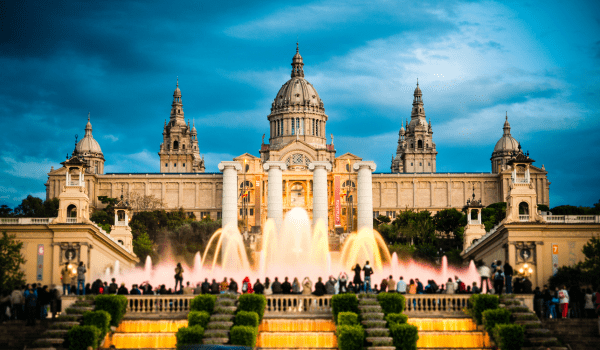
Spain offers a plethora of diverse and enticing cities and islands to explore. Here are 8 of the most popular places to visit when in Spain:

Spanish archipelago in the Atlantic, known for stunning beaches, volcanic landscapes, and year-round mild weather. Take a look at our Canary Islands Travel Guide

Known for its stunning architecture, including Gaudi's masterpieces, and vibrant street life, Barcelona is a must-visit city on the Mediterranean coast.
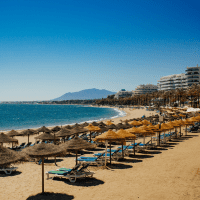
Glamorous coastal town on the Costa del Sol, Spain, famed for luxury resorts, beautiful beaches, and vibrant nightlife. Take a look at our Marbella Travel Guide
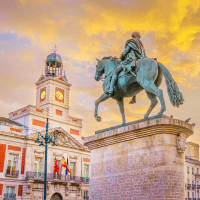
The capital city boasts world-class museums, historic neighborhoods, and a lively atmosphere, making it a cultural and political hub.

Famous for its futuristic City of Arts and Sciences complex, Valencia also offers beautiful beaches and a lively old town.
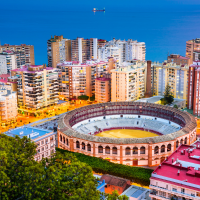
A gateway to the Costa del Sol, Málaga combines beaches with a rich cultural scene, including the birthplace of Picasso.
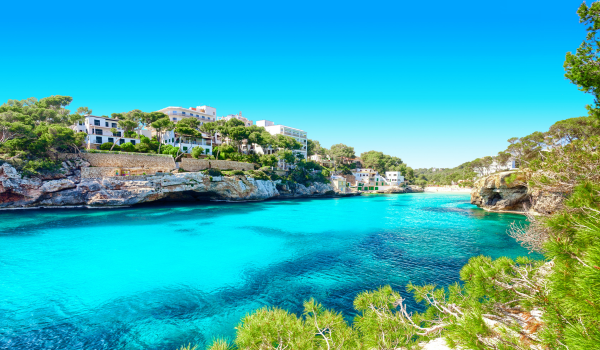
A gateway to the Costa del Sol, Málaga combines beaches with a rich cultural scene, including the birthplace of Picasso.

A UNESCO World Heritage Site, Toledo is known for its well-preserved medieval architecture and rich history.
In Spain, every corner holds a story, every plate is a delight, and every experience is a treasure waiting to be unearthed. Here are some highlights you shouldn’t miss:
Visit iconic landmarks like the Sagrada Família in Barcelona, Alhambra in Granada, and Park Güell in Barcelona to appreciate Spain's architectural wonders.
Join the vibrant festivities of Spain, such as La Tomatina, San Fermín, and Semana Santa, to immerse yourself in local traditions.
Embark on the famous pilgrimage route, the Camino de Santiago, which offers both spiritual and scenic rewards.

This iconic event that takes place during the San Fermín festival in Pamplona, Spain. The festival is held annually from July 6th to 14th, and the running of the bulls is one of its most famous traditions.
Savor traditional Spanish tapas at local bars, sampling a variety of small dishes like patatas bravas, croquettes, and jamón ibérico..
Wander through historic city centers like Toledo, Segovia, and Córdoba, which are UNESCO World Heritage Sites.

Enjoy your own Private Studio or Room with Balcony and district and ocean views! Flexible accommodation options will suit all family requirements.
Enjoy a wide range of activities and experiences that showcase the country’s rich culture, history, and natural beauty. Here are the 6 things tourists often do when they visit Spain:

A stunning medieval city known for its rich history and architecture.
Cost (Entry to Alcázar): €13 EUR (adult ticket)

A stunning basilica designed by Gaudí, known for its intricate architecture and ongoing construction.
Cost: €26 EUR (adult ticket)
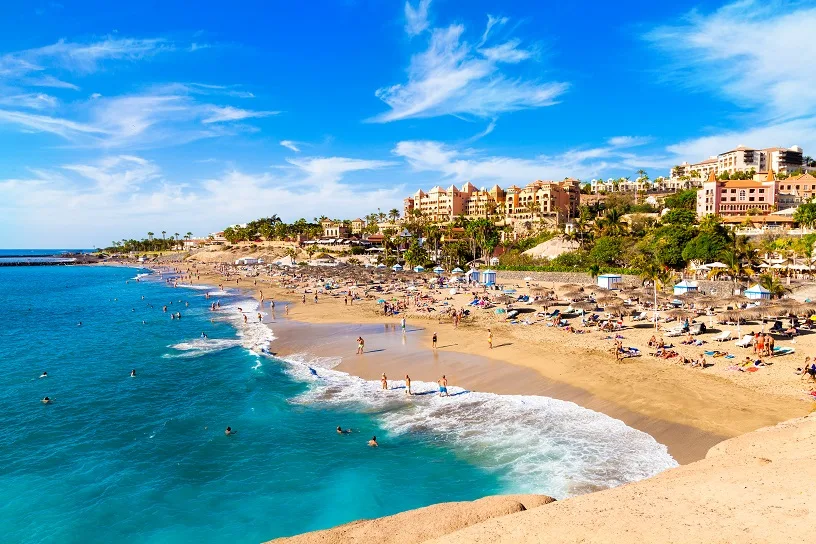
The Canary Islands, Spain's sun-soaked paradise, offer diverse landscapes, from volcanic terrain to pristine beaches, making them a haven for travelers.
Average cost: €30 to €200 EUR per person for a day trip from Tenerife.

The world-famous tomato-throwing festival in Buñol, Valencia, where participants engage in a lively food fight.
Average cost is around €12-€15 EUR (participant fee).
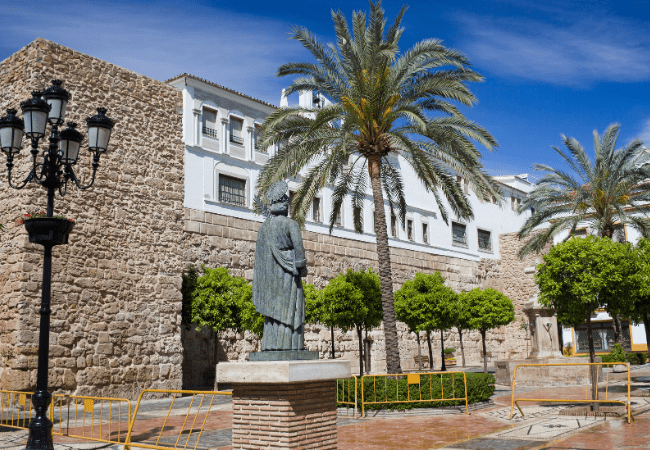
Marbella's Old Town is a charming labyrinth of cobblestone streets, adorned with vibrant flowers, historic architecture, and inviting cafes.
Cost: Free

Enjoy a scenic boat tour along the Guadalquivir River, offering views of Seville's landmarks.
Average cost: €15-€25 EUR per person.

When visiting the Spain, tourists should be aware of the following local customs to show respect for the culture:
Bullfighting in Spain is a centuries-old tradition blending artistry and bravery. It’s tied to local customs, reflecting Spain’s heritage, while sparking debate over its cultural significance and animal welfare. It’s essential to be respectful of local customs and traditions if you attend.
Most towns and cities in Spain celebrate a variety of festivals and holidays throughout the year. These often involve parades, music, dancing, and traditional costumes. La Feria de San Bernabé in June is one of the most significant local festivals.
It’s customary in Spain, to greet friends and acquaintances with two kisses on the cheek (one on each side). This is a warm and friendly way to say hello.
Spanish is the official language, so learning a few basic Spanish phrases or greetings can go a long way in showing respect for local customs.
Many Spaniards are Catholic, and religious customs and festivals are important. Be respectful if you visit churches or participate in religious events.
The siesta, a short afternoon nap, is a longstanding tradition in Spain. Many shops and businesses close for a few hours in the afternoon, particularly in the summer when the midday heat is at its peak.
Tipping is customary in restaurants and for services like taxis and hotel staff. A standard tip is around 10% to 15% of the bill.

Spain experiences a diverse range of climate zones due to its geographical diversity, but in general, the country has four distinct weather seasons:
As an Australian tourist, you do not need a visa to enter Spain.
Under the Schengen Convention, Australian citizens intending to travel to any Schengen country*, for a holiday or business, are authorised to stay in the Schengen zone for a maximum total of 90 days, without a visa, during any six month period.
90 Day visa reasons:
After spending 90 days in the Schengen countries, travellers are required to remain out of the Schengen area for a period of at least 180 days before they can re-enter.
* Countries part of the Schengen Convention: Austria, Belgium, Czech Republic, Denmark, Estonia, Finland, France, Germany, Greece, Hungary, Iceland, Italy, Latvia, Lithuania, Luxembourg, Malta, the Netherlands, Norway, Poland, Portugal, Slovenia, Slovak Republic, Sweden, Switzerland and Spain.
Note: Please double-check the above links and requirements before making travel arrangements, as they are subject to change.
SmartTaveller.gov.au travel advice is to exercise normal safety precautions. All COVID-19 travel restrictions for entry into Spain have been removed, and face masks are no longer required.
While the Spain is considered safe for tourists, it’s still important to take precautions to avoid theft and stay safe. Be sure to keep an eye on your belongings and avoid walking alone at night, especially in less touristy areas. It’s also a good idea to carry cash in case credit cards aren’t accepted or there are issues with the card machines.
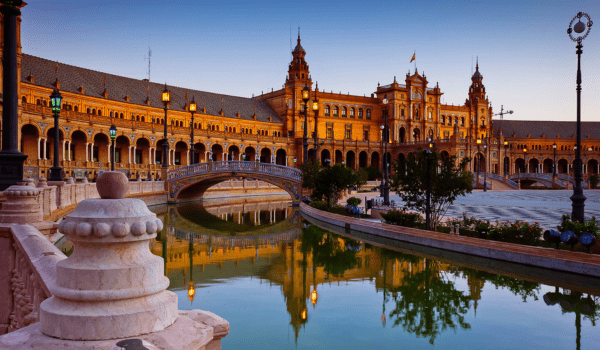

Explore Italy’s charm with our travel guide. From Rome’s history to Venice’s canals & Amalfi’s coast, discover culture, landscapes & cuisine tips!
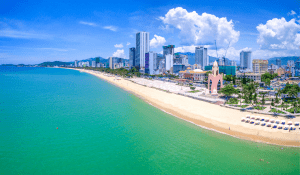
Searching for stunning beaches, delicious food, and Vietnamese charm? Discover our Nha Trang travel guide for your ultimate coastal escape.

Discover our Ubud Travel Guide: from attractions & transport to food & costs. Plan your Bali trip with our Ubud insights!

Beaches, Islands and Relaxation! Fiji is the place to be! Discover top destinations, cuisine, and local insights in our Fiji Travel Guide.
Please ensure you have a confirmed booking with the resort before paying for flights.